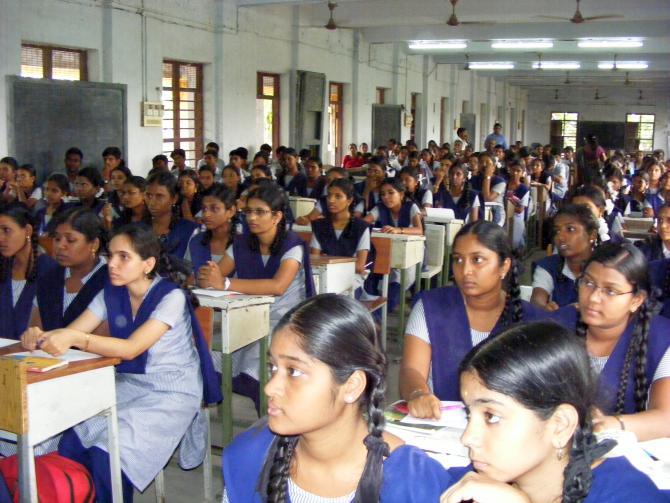New Delhi: Over 850 million children and youth, roughly half of the world’s student population, had to stay away from schools and universities in the light of the coronavirus pandemic according to United Nations Educational, Scientific and Cultural Organization (UNESCO).
“As of March 17, 2020, 850 million youth and children, which is roughly half of the world’s student population, had to stay away from schools and universities due to the COVID-19 pandemic.Nationwide school closures are in place in 102 countries and local shut downs in 11 other countries, This represents more than a double in the number of learners prevented from attending educational institutions, with further increases expected,” UNESCO said.
It further said that the scale and speed of the school and university closures represent an unprecedented challenge for the education sector.
“Countries around the world are racing to fill the void with distance learning solutions but the uncertain duration of the closures adds further complication to their efforts. These range from hi-tech alternatives like real-time video classes conducted remotely to lower-tech options such as educational programming on radio and television.”
The impacts of school closure are difficult to overstate and many of them extend beyond the education sector.
The disadvantages of interrupted learning are disproportionate for underprivileged learners who tend to have fewer educational opportunities outside school.
Moreover, many children and youth rely on free or discounted school meals for healthy nutrition. When schools close, nutrition is compromised.
Working parents are more likely to miss work to take care of their children when schools close. This results in wage loss and decreased productivity.
School closures place an additional burden on schools as parents and officials redirect children to schools that are open.
This then leads to school dropouts. It is a challenge to ensure children and youth return and stay in school when schools reopen, especially after protracted closures.
Schools are hubs of social activity and human interaction. When schools close, many children and youth miss out on social contact that is essential to learning and development.
UNESCO is also launching a Global COVID-19 Education Coalition that brings together multilateral partners and the private sector, including Microsoft and the Global System for Mobile Communications (GSMA), to help countries deploy remote learning systems so as to minimize educational disruptions and maintain social contact with learners.
“The current situation imposes immense challenges for countries to be able to provide uninterrupted learning for all children and youth in an equitable manner. We are stepping up on our global response by creating a coalition to ensure a fast and coordinated response. Beyond meeting immediate needs, this effort is an opportunity to rethink education, scale-up distance learning and make education systems more resilient, open and innovative,” said UNESCO Director-General Audrey Azoulay.
“Difficulties rise exponentially when school closures are prolonged,” said Stefania Giannini, UNECO’s Assistant Director-General for Education. “Schools, however imperfectly, play an equalizing role in society and when they close, inequalities become far greater.”
UNESCO will further host regular webinars and virtual meetings to allow country representatives opportunities to share information on the effectiveness of approaches used in different contexts, building on the success of its ministerial videoconference of March 10 that brought together 73 countries. (ANI)





